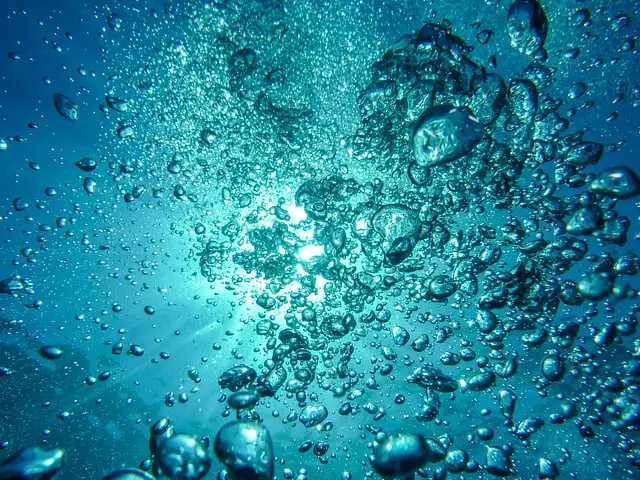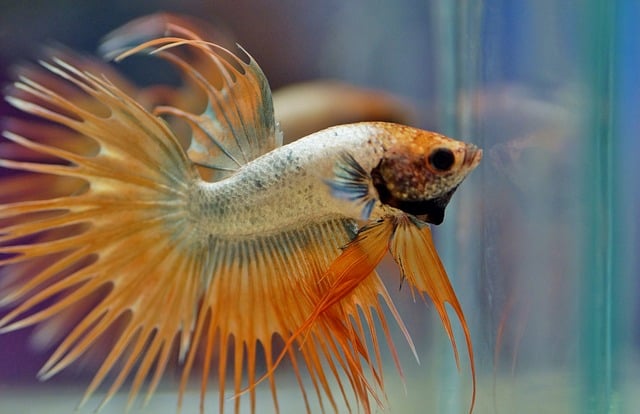Maintaining a safe pH level in your aquarium is vital for the health and longevity of your fish. If the pH level is ‘off’, your aquatic pets with suffer physically and start to show signs of stress and illness. This begs the question, ‘how do you adjust the pH in an aquarium safely?’
To adjust pH in an aquarium safely, use reverse osmosis water and natural methods like crushed coral, limestone, driftwood, almond leaves, baking soda, and vinegar whenever possible. It’s important to test the water regularly with a testing kit to ensure the parameters are both stable and accurate.
Now that you know it’s best to use deionized water and objects found in nature to balance the pH in a fish tank, let’s explore this topic in more detail. Together we’ll learn how to use baking soda, vinegar, driftwood, almond leaves, limestone, etc. to adjust the pH naturally and safely; what the signs of low and high pH in a fish tank are; and what the ideal pH is for an aquarium.
So, if you’re ready to learn more about keeping the pH level in your aquarium both stable and accurate, then let’s begin!
How to Raise pH in an Aquarium?
There are essentially 7 ways to raise the pH level in an aquarium. These include the following:
- Use reverse osmosis or deionized water for buffering purposes and to help create the ideal pH for your tank inhabitants. Make sure to dechlorinate/condition the water in advance and always test the pH with a testing kit before adding it to your aquarium.
- Do ‘top ups’ with pre-treated tap water to help raise the pH reading.
- Line the bottom of the tank with crushed coral or dolomite gravel. These calcium-carbonate-based substrates dissolve slowly which help to naturally increase the pH level over time.
- Add limestone or coral rock to the tank. Decorating your tank with these items will help balance the pH and keep it from dropping too low.
- Take a mesh media bag and fill it with crushed coral or dolomite gravel. Place the bag in your filter to help keep pH levels from spiking.
- Add baking soda to your aquarium water. Begin by removing fish from the tank and then adding a teaspoon of baking soda for every 5 gallons of water.
- Use manufactured products like API pH Up in your aquarium water. Check in-store at your local pet shop or online through Amazon for this convenient and easy-to-use water stabilizing agent.
How to Lower pH in an Aquarium?
There are inherently 7 ways to raise the pH level in an aquarium. These include the following:
- Use reverse osmosis or deionized water for buffering purposes and to help create the ideal pH for your tank inhabitants. Make sure to dechlorinate/condition the water in advance and always test the pH with a testing kit before adding it to your aquarium.
- Use driftwood to decorate your fish tank. Tannins released naturally by the driftwood can help lower pH, but you need a fair amount of it to have a positive effect on the aquatic environment. Simply adding a piece or two won’t help much, especially if you have a large aquarium.
- Add some peat moss/peat pellets to your aquarium filter. Peat moss, like driftwood, contains tannins that help lower pH naturally. To keep it contained, place it in a mesh bag and make sure to utilize peat products designed specifically for aquarium use only.
- Use Indian almond leaves in your aquarium. Not only does this plant naturally lower pH in a fish tank, but it also helps reduce carbonate hardness. Since lower pH levels are more conducive to freshwater conditions in the wild, tropical fish will thrive in a tank with this greenery.
- Use vinegar to help the pH reading. Begin by removing fish from the tank and adding ¼ teaspoon for every gallon of water.
- Do regular cleanings and maintenance including water changes. By performing weekly partial water changes of 15-25%, you’ll help keep the pH level from spiking.
- Use manufactured products like API pH Down in your aquarium water. Check in-store at your local pet shop or online through Amazon for this convenient and easy-to-use water-stabilizing agent.
What Causes High pH in an Aquarium?
The typical cause of high pH in an aquarium is the depletion of carbon dioxide. By regularly topping up the tank with dechlorinated tap water, you inadvertently increase the pH levels. Yet another cause for high pH levels in an aquarium is using untreated water from ground sources.
What Causes Low pH in an Aquarium?
The main culprit for low pH in an aquarium is overcrowding. Too many fish in too small of a space causes the tank to become ‘dirty’. Under-cycling coupled with the increase of nitrates due to buildup of fish waste and uneaten food collecting along the bottom of the tank will drive down the pH readings.

What are the Signs of High pH in a Fish Tank?
The common symptoms of high pH in an aquarium include erratic behavior by fish. Gasping at the surface, rapid gill movements, ‘flicking’ against rocks and other hard surfaces, chaotic swimming, and a change in coloration (becoming pale) are all signs that the pH must be lowered immediately.
What are the Signs of Low pH in a Fish Tank?
The typical signs of low pH in a fish tank include algae overgrowth and dirt buildup along the bottom on the tank. Changes in fish behavior is yet another sign including laying motionless along the substrate, swimming sluggishly, and changes in physical appearance (becoming white or pale-looking).
What Aquarium Products Can Help Lower pH?
To quickly lower the pH level in an aquarium, use API pH Down or API Proper pH 7.0 water stabilizer. These products are available both in-store at your local fish store or online through Amazon. If the problem with your water is too low of a pH level, then purchase API pH Up instead.
These products are designed to effectively remove toxic compounds from tap water. This helps keep the aquatic environment both clean and safe for all tank inhabitants. Fish will be more active and appear healthier and more colorful. Not to be used in tanks with live plants, however.
Is 8.0 pH Too High for an Aquarium?
Depending on the type of fish you have, a pH reading of 8.0 may not be too high. Keeping pH in a safe range is the key – for most tropical freshwater fish, that range is typically somewhere between 6.8 and 7.8. A pH reading of 7.0 is considered neutral whereas anything less is more alkaline.
What is the Proper pH for an Aquarium?
The ‘proper’ pH level for a freshwater aquarium is anywhere between 6.8 and 7.8. Since most aquarists keep fish from different waters in the same aquarium, it’s best you find a pH range that all species are comfortable with. Most tropical fish do well in a neutral to slightly more alkaline aquatic environments.
How to Lower pH in an Aquarium with Vinegar?
To lower the pH in an aquarium using vinegar, simply add ¼ teaspoon of the acidic liquid for each gallon of water. This calculation method should bring the pH reading down by at least 0.3 points. Make sure to remove fish prior to treatment and test with a water testing kit before reintroducing them back into the tank.

How to Raise pH in an Aquarium with Baking Soda?
To raise the pH in an aquarium using baking soda, simply add 1 teaspoon of the powder to every 5 gallons of water. This measurement system has been proven safe for tank inhabitants – just be sure to remove the fish prior to treatment and test with a water testing kit before placing them back in the tank.
Final Thoughts
To sum-up, it’s best to use conditioned/dechlorinated reverse osmosis water and natural items to adjust the pH level in your fish tank. Testing the water regularly with a testing kit is key to keeping the aquatic environment both healthy and safe for all tank inhabitants.
I trust this article has been of help to you in learning how to keep pH levels in an aquarium properly balanced. Thanks for reading and good luck with your aquarist hobby!
Recommended Posts
How Much Do Indian Almond Leaves Lower pH?
Can a Fish Tank have too much Oxygen?
How Do You Cycle an Aquarium – The Nitrogen Cycle
What are Common Fish Tank Problems?






